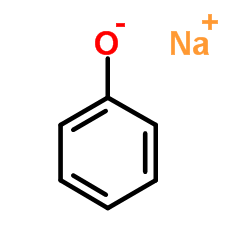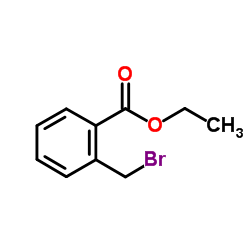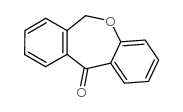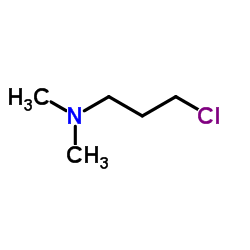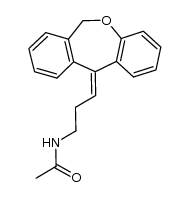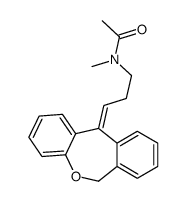1229-29-4
| Name | Doxepin Hydrochloride |
|---|---|
| Synonyms |
P 3693A
Curatin 3-(Dibenzo[b,e]oxepin-11(6H)-ylidene)-N,N-dimethylpropan-1-amine hydrochloride (1:1) 1-Propanamine, 3-dibenz[b,e]oxepin-11(6H)-ylidene-N,N-dimethyl-, hydrochloride (1:1) 3-(Dibenzo[b,e]oxepin-11(6H)-ylidene)-N,N-dimethyl-1-propanamine hydrochloride (1:1) Doxepin hydrochloride EINECS 214-966-8 Adapin N,N-Dimethyldibenz[b,e]oxepin-D11(6H),g-propylamine Hydrochloride 3-Dibenzo[b,e]oxepin-11(6H)-yliden-N,N-dimethylpropan-1-aminhydrochlorid Quitaxon MFCD00079135 1-propanamine, 3-dibenz[b,e]oxepin-11(6H)-ylidene-N,N-dimethyl-, hydrochloride doxepin HCl Novoxapin [Ester] 11-(3-Dimethylaminopropylidene)-6,11-dihydrodibenzo[b,e]oxepine Hydrochloride MF 10 HCl 3-dibenzo[b,e]oxepin-11(6H)-ylidene-N,N-dimethylpropan-1-amine hydrochloride N,N-Dimethyldibenz[b,e]oxepin-δ11(6H),γ-propylamine hydrochloride Novoxapin 11-(3-Dimethylaminopropylidene)-6,11-dihydrodibenz[b,e]oxepine hydrochloride 3-(dibenzo[b,e]oxepin-11(6H)-ylidene)-N,N-dimethylpropan-1-amine hydrochloride Doxepin (Hydrochloride) |
| Description | Doxepin HCl is a tricyclic antidepressant that is marketed worldwide.Target: SSRIsDoxepin inhibits the reuptake of serotonin and norepinephrine and acts as a antagonist at various serotonergic, adrenergic, musacrinic, dopaminergic and histaminergic receptors [1]. In the doxepin-treated patients who completed the study (N = 20, 47.6+/-11.3), medication significantly increased sleep efficiency after acute (night 1, p < or = .001) and subchronic (night 28, p < or = .05) intake compared with the patients who received placebo (N = 20, 47.4+/-16.8 years of age). Doxepin to cause significantly (p < or = .05) better global improvement at the first day of treatment [2]. |
|---|---|
| Related Catalog | |
| References |
| Boiling Point | 413.3ºC at 760mmHg |
|---|---|
| Melting Point | 187-189°C |
| Molecular Formula | C19H22ClNO |
| Molecular Weight | 315.837 |
| Flash Point | 121.3ºC |
| Exact Mass | 315.138977 |
| PSA | 12.47000 |
| LogP | 4.76440 |
| Vapour Pressure | 4.87E-07mmHg at 25°C |
| Stability | Store in Freezer at -20°C |
| Water Solubility | 1 M HCl: 50 mg/mL |
|
Material Safety Data Sheet
Section1. Identification of the substance Product Name: Doxepin HCl Synonyms: Section2. Hazards identification Harmful by inhalation, in contact with skin, and if swallowed. H301:Toxic if swallowed
H361:Suspected of damaging fertility or the unborn child P281:Use personal protective equipment as required P301+P310:IF SWALLOWED: Immediately call a POISON CENTER or doctor/physician P308+P313:IF exposed or concerned: Get medical advice/attention P321:Specific treatment (see on this label) P405:Store locked up Section3. Composition/information on ingredients. Ingredient name:Doxepin HCl CAS number:1229-29-4 Section4. First aid measures Skin contact:Immediately wash skin with copious amounts of water for at least 15 minutes while removing contaminated clothing and shoes. If irritation persists, seek medical attention. Eye contact:Immediately wash skin with copious amounts of water for at least 15 minutes. Assure adequate flushing of the eyes by separating the eyelids with fingers. If irritation persists, seek medical attention. Inhalation:Remove to fresh air. In severe cases or if symptoms persist, seek medical attention. Ingestion:Wash out mouth with copious amounts of water for at least 15 minutes. Seek medical attention. Section5. Fire fighting measures In the event of a fire involving this material, alone or in combination with other materials, use dry powder or carbon dioxide extinguishers. Protective clothing and self-contained breathing apparatus should be worn. Section6. Accidental release measures Personal precautions: Wear suitable personal protective equipment which performs satisfactorily and meets local/state/national standards. Respiratory precaution:Wear approved mask/respirator Hand precaution:Wear suitable gloves/gauntlets Skin protection:Wear suitable protective clothing Eye protection:Wear suitable eye protection Methods for cleaning up: Mix with sand or similar inert absorbent material, sweep up and keep in a tightly closed container for disposal. See section 12. Environmental precautions: Do not allow material to enter drains or water courses. Section7. Handling and storage Handling:This product should be handled only by, or under the close supervision of, those properly qualified in the handling and use of potentially hazardous chemicals, who should take into account the fire, health and chemical hazard data given on this sheet. Storage:Store in closed vessels. Section8. Exposure Controls / Personal protection Engineering Controls: Use only in a chemical fume hood. Personal protective equipment: Wear laboratory clothing, chemical-resistant gloves and safety goggles. General hydiene measures: Wash thoroughly after handling. Wash contaminated clothing before reuse. Section9. Physical and chemical properties Appearance:Not specified No data Boiling point: Melting point:No data Flash point:No data Density:No data Molecular formula: C19H21NO.ClH Molecular weight: 315.8 Section10. Stability and reactivity Conditions to avoid: Heat, flames and sparks. Materials to avoid: Oxidizing agents. Possible hazardous combustion products: Carbon monoxide, nitrogen oxides, hydrogen chloride. Section11. Toxicological information No data. Section12. Ecological information No data. Section13. Disposal consideration Arrange disposal as special waste, by licensed disposal company, in consultation with local waste disposal authority, in accordance with national and regional regulations. Section14. Transportation information UN Number:UN2811Class: 6.1Packing group: III Proper shipping name: TOXIC SOLIDS, ORGANIC, N.O.S. (Doxepin HCl) Section15. Regulatory information No chemicals in this material are subject to the reporting requirements of SARA Title III, Section 302, or have known CAS numbers that exceed the threshold reporting levels established by SARA Title III, Section 313. SECTION 16 - ADDITIONAL INFORMATION N/A |
CHEMICAL IDENTIFICATION
HEALTH HAZARD DATAACUTE TOXICITY DATA
|
| Symbol |



GHS02, GHS06, GHS08 |
|---|---|
| Signal Word | Danger |
| Hazard Statements | H225-H301 + H311 + H331-H370 |
| Precautionary Statements | P210-P260-P280-P301 + P310-P311 |
| Personal Protective Equipment | Eyeshields;Faceshields;Gloves;type P2 (EN 143) respirator cartridges |
| Hazard Codes | T,F |
| Risk Phrases | R25 |
| Safety Phrases | 36/37/39-45 |
| RIDADR | UN 2811 6.1/PG 3 |
| WGK Germany | 3 |
| RTECS | HQ4375000 |
| Packaging Group | III |
| Hazard Class | 6.1(b) |
| HS Code | 2932999099 |
|
~% 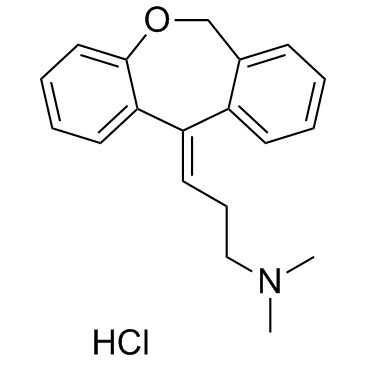
1229-29-4 |
| Literature: Synthetic Communications, , vol. 19, # 19 p. 3349 - 3352 |
|
~% 
1229-29-4 |
| Literature: Synthetic Communications, , vol. 19, # 19 p. 3349 - 3352 |
|
~% 
1229-29-4 |
| Literature: Synthetic Communications, , vol. 19, # 19 p. 3349 - 3352 |
|
~% 
1229-29-4 |
| Literature: Synthetic Communications, , vol. 19, # 19 p. 3349 - 3352 |
|
~% 
1229-29-4 |
| Literature: Synthetic Communications, , vol. 11, # 3 p. 241 - 246 |
| Precursor 6 | |
|---|---|
| DownStream 6 | |
| HS Code | 2932999099 |
|---|---|
| Summary | 2932999099. other heterocyclic compounds with oxygen hetero-atom(s) only. VAT:17.0%. Tax rebate rate:13.0%. . MFN tariff:6.5%. General tariff:20.0% |

